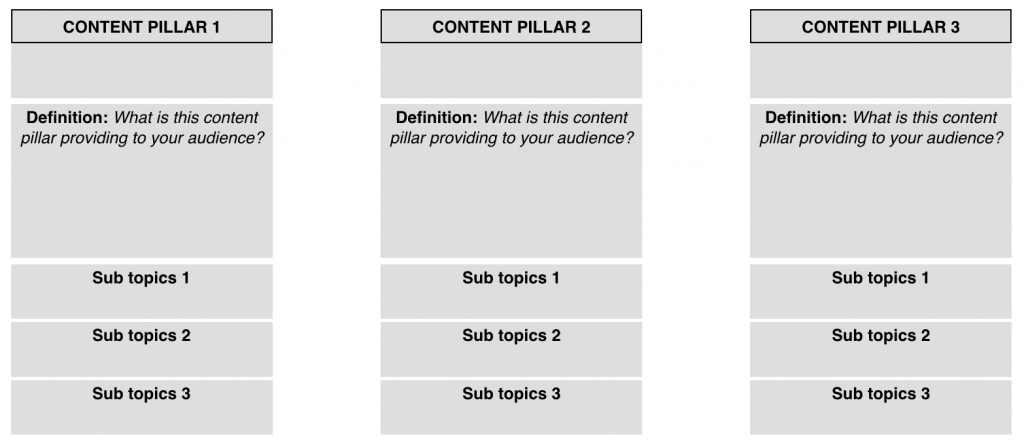
“A goal without a plan is just a wish” a wise man (named Antoine de Saint-Exupery) once said.
When it comes to social media, truer words have never been said. If you’ve already dipped your toe into the world of social media marketing without having a solid plan in place, chances are you’re not seeing the full potential of what you can achieve.
In this article we hope to give you the tools to create a social media strategy for your business or brand. If you’re still in a rut after this, you might want to check out our social media strategy workshops which go into more detail.
By now we’re assuming you’re aware of the many pros of being on social media, and know which channels you’re going to attack (more on that here). So let’s get down to it by first asking…
WHAT IS A SOCIAL MEDIA STRATEGY AND WHY DO I NEED ONE?
A social media strategy acts like a blueprint, tying all your posts, images and tone of voice together in a strong, differentiated approach. The key here is consistency. A strategy will help to build a consistent approach in things like how to engage with customers and potential customers, and will also increase a business or brand’s credibility. It’ll also help to put in a structure to monitor and measure your efforts.
At this point (if we haven’t lost you already) you may be thinking this is going to take you ages — well, it might take you a little time, but it’s well worth the investment and will save you time in the long run. As we mentioned right at the start, the key is have a clear goal and plan towards it.
Here’s our 4-step plan to creating your very own social media strategy:
Image from Splitshire
STEP 1: ASK YOURSELF – WHAT IS THE PURPOSE OF THIS?
This is the time to think big picture. Like all marketing and business activity, it’s crucial to have a purpose and to have objectives — what are you hoping to achieve on social? Write a list of what you want to use your social media channels for. This could include things like increase brand awareness, drive traffic to the website (e.g. aiming for 100 new visitors per week by July 2016), or selling products straight off your social profiles. Whatever your purpose and objectives, make them SMART (Specific, Measurable, Attainable, Relevant, Time-bound), rather than something vague like ‘get better at social’.
Image by Toa Heftiba via Unsplash
STEP 2: RESEARCH
Next step is to spend some time — as much time as is possible for you (even if it’s only 1/2 hr)— looking at what your competitors are doing on social. Try to sort out what they’re doing well (which sort of posts are getting the most engagement etc.) and what they’re not doing well. If there’s not many competitors in your industry locally, throw the net wider and look overseas or at larger companies in your industry. For example, if you’re a local travel agency, try looking at other travel-related brands like Flight Centre, Intrepid, or even Lonely Planet.
Without copying their content, this will help you to define what audiences engage with in your area or industry. Now think about how you can add your own point of difference to this content, or how you can improve on it.
Image by Camille Kimberly via Unsplash
STEP 3: DEFINE AND REFINE
This is the *fun* part of your strategy — content. Grab a pen and a blank bit of paper and brainstorm everything that your brand or business stands for and who your customers (or potential customers) are. For example, if you’re a gym your page might look like this:
The end result should give you a pretty strong direction and some good ideas about what you can talk to your online community about that will resonate with them too. We’ll call each topic a ‘content pillar’, which can be built on to give more specific ideas for posts.
Next, expand on your chosen Content Pillars (so Jimmy’s Gym would have Fitness, Health and Community as their Content Pillars ) with 3-4 sub-topics (e.g. under Health there might be nutrition tips, healthy recipes, shakes and supplements). This will help you to build a structured calendar each month to interact with your audience and reach your social objectives.
Following this, put your 3-4 Content Pillars in order of highest importance to your customers. This will help you to define how often you should post about each topic.
STEP 4: EXECUTE
Now you’re going to put this plan into action. Nominate a colour for each of your content pillars, then create a monthly calendar in Excel and colour code each day you’re going to post. A good rule for deciding how many times to post in a week is to commit to the number of posts you’ll be able to dedicate time and resources to. Again, the key here is consistency, so if you can only post twice a week, make sure it’s twice a week every week!
To get you started, download our free SOCIAL MEDIA CONTENT CALENDAR TEMPLATE
Image by Splitshire









